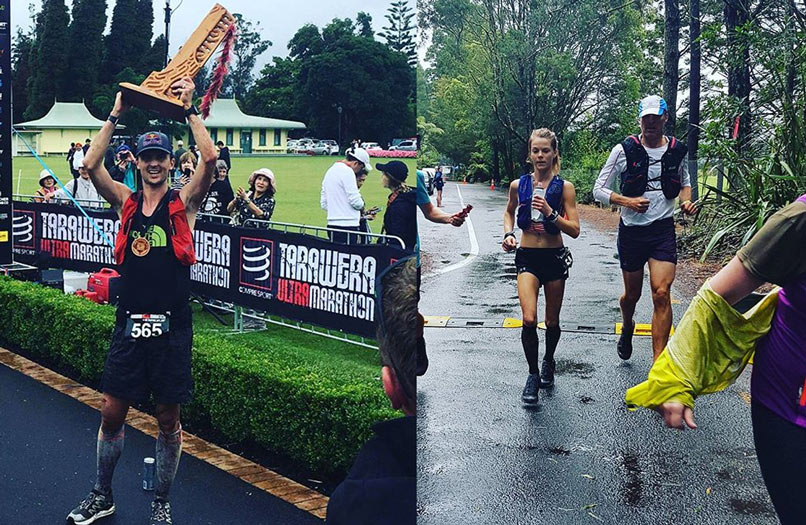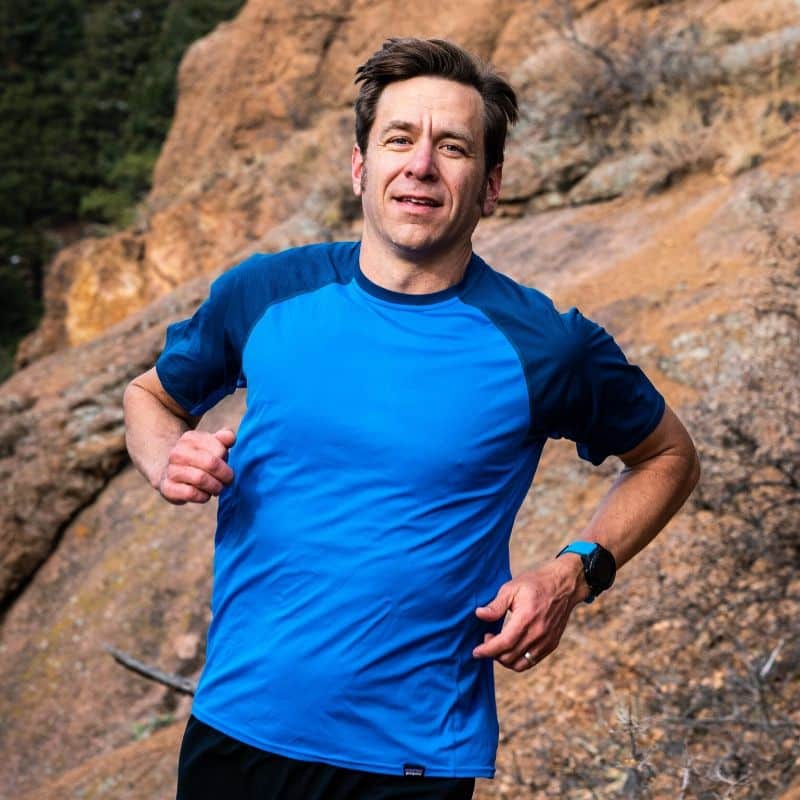
Kelly and Dylan – A Tale of Two Runners
By Jason Koop
CTS Coaching Director, Author of “Training Essentials for Ultrarunning”
Over the weekend, CTS Athletes Kelly Wolf and Dylan Bowman earned victories at the Tarawera Ultramarathon in New Zealand. They both ran smart, gutsy races and fended off great competitors to earn the top step on the podium. Their wins were both close, with margins of victory less than 2%. I have been fortunate enough to guide both athletes in their running careers, and with such similarly close victories in the same event you might think they’re using the same blueprint for preparation. You would be wrong.
While Kelly and Dylan have some similarities as athletes, I have come to know they are each unique in their personalities and the ways they train and live as human beings on planet Earth. That Dylan and Kelly are both different and similar illustrates the fact that, while there are some universal underpinnings, there is no singular blueprint for success.
Birds of a Feather Fly Together
Good Genes
First things first: they were born with great athletic attibutes. Throughout my coaching career, I’ve learned to take very little credit for an athlete’s success. Success is something athletes earn personally and, while I can influence and guide things along the way, the athlete is ultimately responsible for what he or she earns on race day. One thing I certainly cannot have an influence on is where their genes came from. Kelly and Dylan both chose their parents well and are predisposed to high levels of endurance capacity. Physiological testing data from CTS’ lab for Kelly, and from the Red Bull High Performance lab for Dylan, confirm they have great aerobic engines. Needless to say, if you want to be a great endurance athlete it helps to start with a big and economical aerobic engine.
Tireless Work Ethic
Thankfully, we don’t give out medals for good genes or lab data (or physical “talent”, as some people will call it). In fact, I’d be willing to bet that throughout their careers, Kelly and Dylan have and will beat many athletes with more physical “talent.” I know this because they are both tireless workers, which is another trait they have in common. They put in the work, and the work of diligent rest (more on that later) every single day. They have a ‘no excuses’ approach to their training. This aspect alone, the act of consistently putting in the work, is by far their biggest key to success. It’s not sexy, and there are no click-bait nor buzz worthy ways to describe it. You can’t put it a box and describe it in a 5-step plan, but it works. Put in the work, make no excuses, and you get results.
Frank Communication
Putting in the work does not mean being a training robot. It does not mean simply looking at your training calendar and blindly following what’s on the screen, oblivious to how your body is adapting and feeling. Both Kelly and Dylan communicate to me in an honest and frank fashion. They tell me when they are feeling good, when they are tired, when they are feeling excited or nervous, and even when they are scared and vulnerable. They tell me about their personal lives and health history. This honest and frank feedback is something I intentionally facilitate because, through communication, trust is built. Through trust, we create a coach/athlete environment wherein that communication – no matter how sensitive, personal, benign or routine – will be used to help make them better athletes.
Diligent Rest
Based on frank and consistent communication, I know when and how hard to push Kelly and Dylan. I also know when to back off and let them rest. And rest they do, which is another commonality they both have. Dylan and Kelly are not afraid of rest. This attribute is facilitated by their work ethic. Often, athletes are afraid of rest because, deep down, they lack confidence in the work they’ve done. It is easy to rest after you have put in the work. You should need it. It has become cliche to say that “athletes need more rest” and that “rest is when the adaptations occur” and blah, blah, blah. While that’s true, the front side of the equation often needs more attention. They need diligent rest only after an adequate amount of work. Kelly and Dylan strike this balance beautifully.
Consistent Group Training
Kelly and Dylan make intelligent use of training partners. While I have each of them on an individualized plan, they are keen to look out for opportunities to train with local runners and make use of training groups for friendship, camaraderie and the support that comes with a team environment. Interestingly, their routine training partners are markedly different. Kelly has been training in Colorado with Telluride High School standout, Soleli Gaylord. They routinely link up and hit the Telluride trails for workouts and easy runs alike. Dylan’s California training group is far more diverse. The Mill Valley trail running scene is literally overflowing with trail and ultrarunners. Each weekend, dozens of diverse runners gather at the San Francisco Running Company to put in some weekend miles and then chow down for brunch. It is common to have 20-30 runners training for a dozen different events under several coaches. Yet, they all find a way to harmoniously get in the training they need as individuals, push themselves when needed, enforce the “gentleman’s pace” when the run gets too intense, and unequivocally support each other during the process. They celebrate collectively when one wins, and are also there to commiserate after a loss.
Tough As Nails
Last but not least, Kelly and Dylan are as tough as they come. So tough, they routinely wind up on cots in the medical tents after their races (and I have the pictures to prove it). While some of this toughness is innate, and their parents deserve credit for their upbringing, the lion’s share of their toughness is forged through training. I used the word forged intentionally in this sense. There’s no one singular workout or even string of workouts that creates toughness. The fact they consistently put in the work, communicate to me so that work is further tailored, leverage their training partners, and consistently do all of this over long periods of time are the keys to forging the toughness they utilize on race day.
No Two Leopards Have The Same Spots
Individual Training Focus
While Kelly and Dylan have a lot in common, there are areas in which they are quite different. One of the starker contrasts was illustrated by their final training weeks leading into Tarawera. Dylan utilized a tried and true lactate threshold phase leading into the event. Two or three times a week he completed three to four 10-15 minute intervals at an 8 out of 10 on the Rate of Perceived Exertion scale. These workouts are at an intensity he can sustain for about an hour maximally, hard and uncomfortable but sustainable. Kelly’s final few weeks were marked by VO2 max work: 1-3 minute intervals at maximum intensity, as hard as she can possibly go. These workouts are extremely difficult and at an intensity only sustainable for a handful of minutes. Why the contrast when they were preparing for the same race? The answer lies in the fact they have very different levels of experience and thus, different training was required to elicit the best results.
Generalization vs. Specificity
Improvement in endurance sports is asymptotic, meaning you make the most improvements early on and, as time goes by, the subsequent improvements are harder and harder to come by. Dylan has been running ultramarathons for nearly a decade. While this timeframe hardly puts him into the grizzled old veteran category, it does put a premium on the precision of his training. In other words, he has to train at an intensity very close to race intensity to reap the most reward. Looking at his data from the race, the first two hours were performed within approximately 10% of that threshold work he had been doing, and most of the climbing was done at the exact same intensity he nailed week after week leading into the race (much of the latter portion of the race was in horribly muddy conditions, making the intensity evaluation difficult).
► Free Ultrarunning Training Assessment Quiz
Take our free 2-minute quiz to discover how effective your training is and get recommendations for how you can improve.
Kelly, on the other hand, has only been running for about 3 years and is in the rapid improvement period of her career. She has a long way to go before her improvements start to level off. Therefore, her training can be more generalized, less focused on the event at hand, and include more focus on intensity (and consequently less on volume). Athletes of all calibers can learn from the differences between Dylan and Kelly. The less experienced you are, the more improvement you can achieve from a variety of less specific and higher intensity training. The more experienced you are, the bigger premium you need to put on training specifically and systematically for an event.
Final Training Response
Finally, Kelly and Dylan’s responses to the last few workouts leading into Tarawera could not have been more opposite. One of Dylan’s last workouts was also one of his best. He ran his third fastest time up Mt. Tamalpais, a climb he has done dozens and dozens of times. His confidence was sky high knowing that, based on that one workout, he’s as fit as he’s ever been.
Kelly’s last few workouts could not have been more different. Her worst two workouts – perhaps ever –were her last two leading into the event. Situations like that normally crush athletes. It can be an ultimate confidence blow leading up to a big race.
Enjoying This Article? Get More Free Running Training Tips
Get our coaches' best training advice, delivered straight to your inbox weekly.
With both athletes I took the same approach to demonstrate why they were ready. I reminded them to look over the entirety of their training, not just the last few workouts. Sure, with Dylan I emphasized that the last few workouts demonstrated he was fit. But I was quick to point out that he had a whole lot of good work in the bank for the last several weeks, not just the last few. Same with Kelly. She had a ton of good work put in before those last two dreadful workouts, so that became the focus for her leading into the event.
The lesson for all athletes is that the whole training process is worth more than any single, or even few, workouts. You are never as bad, or as good, as your last workout. You are as good as the entirety of all the work you have done. Do the work. Make the work count. Communicate what’s going on. Rest deliberately. And leverage a team along the way. You’ll end up fitter and tougher in the long haul.


Comments 3
This is a wonderful article. I am a cyclist training with a CTS coach and every point in the article is pertinent to my bike riding. In fact Julia and I had the conversation concerning anxiety and other aspects concerning my phycological being last week. I never thought other athletes had anxiety until our conversation.
Thank you for writing this.
Great insight! This article confirms qualities all athletes should strive to embrace, yet demonstrates we are all unique as individuals.
Jason, I really enjoyed this article. One of your best. And it comes at a time that I needed to read something like this.